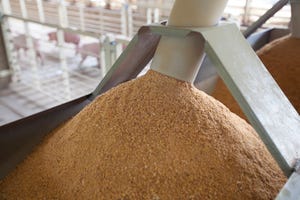February 16, 2012

Recent data reporting U.S. meat and poultry consumption has created a false and overly-simplistic impression that meat demand is declining, says Ron Plain, University of Missouri agricultural economist.
He says that is simply not the case. In a recent background report he explains that data from recent years shows that U.S. per capita meat and poultry consumption has declined. But he says that doesn’t mean that consumer interest or demand has declined.
“Declines in per capita meat and poultry consumption are due to a number of factors. The primary reason is a decrease in production. Red meat and poultry production in 2012 is expected to be down 1.7% from 2011 and down 2.9% from 2008.
“The second reason is an increase in U.S. meat and poultry exports combined with a decline in imports. U.S. exports of beef, pork, broiler and turkey were each record high in 2011. Combined beef, pork, broiler and turkey imports in 2011 were the lowest since 1997. In addition, growth in the U.S. population makes less meat and poultry available per capita,” Plain explains.
Less meat and poultry production is a function of record level prices of livestock and poultry feed, driven by ethanol production. Only 14% of the U.S. corn crop was used to make ethanol in 2005; that figure rocketed to 40% of the 2011 corn crop.
Higher feed costs translate into less meat and poultry production and higher prices for consumers, he says.
The real picture is that overall domestic meat and poultry demand increased from 1998 through 2004. It declined in 2005 and 2006, grew slightly in 2007 before dropping in 2008-2010. In 2011, pork, beef and turkey demand actually grew, Plain says.
For the full report, go to http://web.missouri.edu/~plainr/Papers/2011 demand comments.pdf.
You May Also Like



